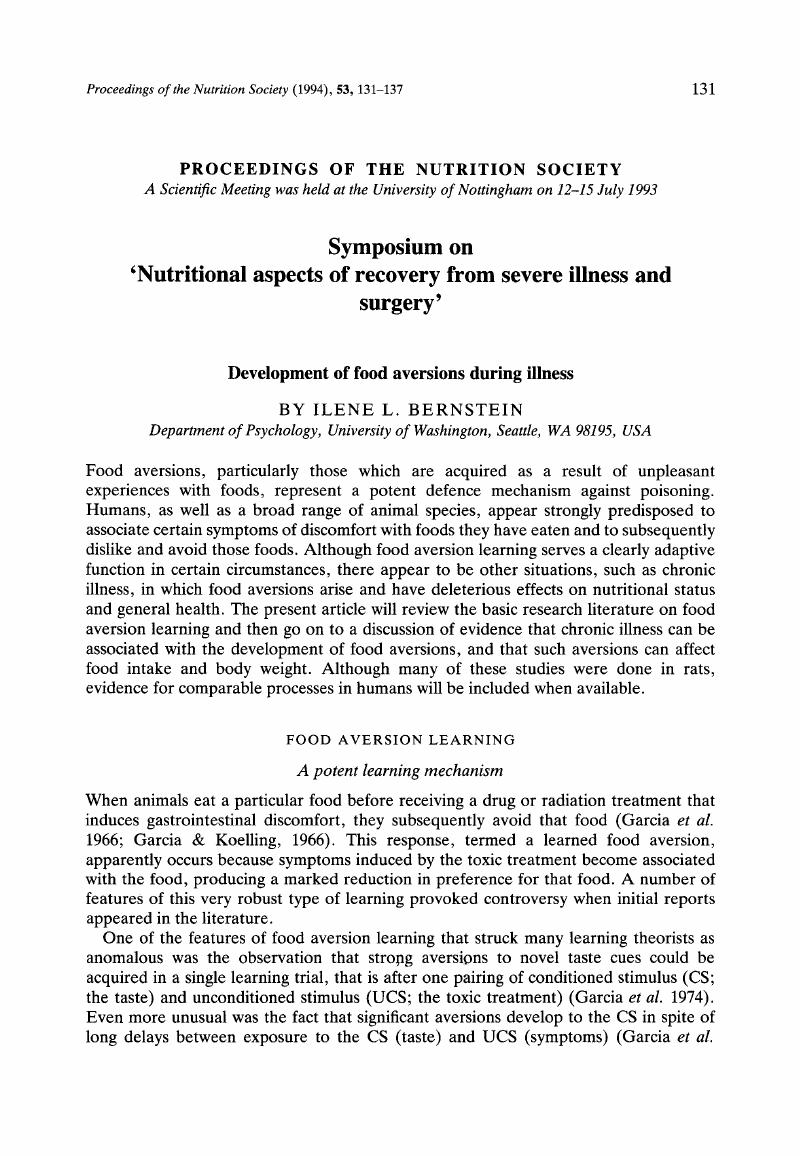Crossref Citations
This article has been cited by the following publications. This list is generated based on data provided by Crossref.
Forbes, J.M.
and
Kyriazakis, I.
1997.
Meeting Report: Diet Selection in Animals and Man: Mini-Symposium of the Rank Prize Funds.
Appetite,
Vol. 28,
Issue. 2,
p.
185.
KYRIAZAKIS, I.
TOLKAMP, B.J.
and
HUTCHINGS, M.R.
1998.
Towards a functional explanation for the occurrence of anorexia during parasitic infections.
Animal Behaviour,
Vol. 56,
Issue. 2,
p.
265.
Rogers, Peter J.
1999.
Eating habits and appetite control: a psychobiological perspective.
Proceedings of the Nutrition Society,
Vol. 58,
Issue. 1,
p.
59.
Skolin, Inger
Koivisto Hursti, Ulla-Kaisa
and
Wahlin, Ylva Britt
2001.
Parents' Perception of Their Child's Food Intake After the Start of Chemotherapy.
Journal of Pediatric Oncology Nursing,
Vol. 18,
Issue. 3,
p.
124.
2001.
Adverse Reactions to Food.
p.
195.
Freeland-Graves, Jeanne
and
Nitzke, Susan
2002.
Position of The American Dietetic Association.
Journal of the American Dietetic Association,
Vol. 102,
Issue. 1,
p.
100.
2007.
Position of the American Dietetic Association: Total Diet Approach to Communicating Food and Nutrition Information.
Journal of the American Dietetic Association,
Vol. 107,
Issue. 7,
p.
1224.
Gibson, E.L.
and
Brunstrom, J.M.
2007.
Appetite and Body Weight.
p.
271.
Selwood, Karen
Ward, Evelyn
and
Gibson, Faith
2010.
Assessment and management of nutritional challenges in children’s cancer care: A survey of current practice in the United Kingdom.
European Journal of Oncology Nursing,
Vol. 14,
Issue. 5,
p.
439.
Ward, Evelyn
2010.
Nutrition and Cancer.
p.
311.
Gaultier, A.
Meunier‐Salaün, M. C.
Malbert, C. H.
and
Val‐Laillet, D.
2011.
Flavour exposures after conditioned aversion or preference trigger different brain processes in anaesthetised pigs.
European Journal of Neuroscience,
Vol. 34,
Issue. 9,
p.
1500.
Rottman, Joshua
DeJesus, Jasmine
and
Greenebaum, Heather
2019.
Handbook of Emotional Development.
p.
283.
Leung, Y. Becca
2024.
Assisted Enteral Feeding of Exotic Companion Animals.
Veterinary Clinics of North America: Exotic Animal Practice,
Vol. 27,
Issue. 1,
p.
115.





